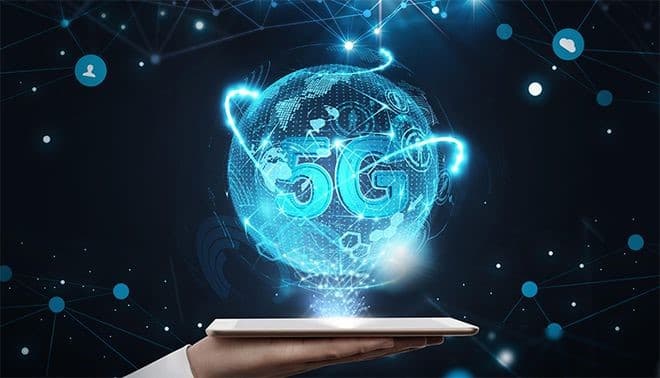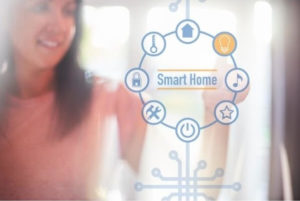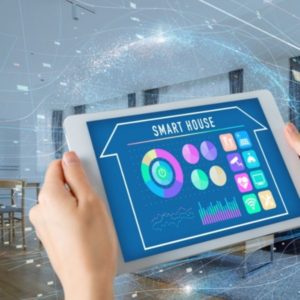Internet of Things is a vision of people, which refers to any traditional device connected through the Internet to achieve random interconnection.
Smart home is a sunrise industry in IoT application, and home life is continuously going intelligent. Artificial intelligence, 5G, IoT, and cloud computing technologies have officially become the core technologies leading home intelligence.
With the innovation and application of technology, artificial intelligence and big data to achieve automatic control of smart home products and improve user experience has become an important direction for the development of smart home products. The development of a real smart home must be a direct transmission of human sensory feelings to home devices without any terminal device. They can read the human mind and realize direct “dialogue” between home devices and the human brain.
In foreign markets, since around 2000, Apple, IBM, Google, Amazon has also put forward the “smart city,” “smart home” concept, and the production of security and other areas of intelligent software and hardware products.

Table of Contents
Toggle5G provides network communication guarantee and security protection for smart home implementation
The ultra-high-speed transmission of 5G technology greatly facilitates the detection and management of information. The “perception” among smart home components is more accurate and rapid, and the degree of wisdom will be greatly improved.

Smart home in 5G era, the system can easily realize the control of all security issues. The security protection system will arm the level of possible danger in the home, rely on high-speed information transmission, use accurate logic judgment, automatic alarm, issue instructions, and force the front line when necessary. At the same time, the monitoring equipment has a resolution of 8K and a high value of video surveillance analysis. The combination of the two can make all possible dangerous situations disappear into invisibility and realize the safety of the whole house without worry.
IoT is the core technology of smart home landing, contributing to a complete management operating system.
The core of “IOT” is to use the communication network to link all the hardware to facilitate the interaction and transmission of home information. Internally, under the overall home network operating system, commands are given to the corresponding hardware and modules to achieve the detection and control of home electronic hardware. Externally, the home system needs a medium platform for external communication to realize the communication between “internal” and “external” to meet the needs of remote control, detection, and information exchange, which is usually smartphone, smart watch, Ipad, etc. The relationship between smart home and IoT is complementary. Smart home devices can provide data collection, collation, and transmission services for IoT, and IoT can build a bridge of “communication” between smart homes, and the combination of the two can realize information transmission, interconnection, and cooperation between smart home devices.
Cloud computing supports the networking of smart home devices and data storage processing.
Cloud computing is the uppermost centralized management and control platform to realize the overall control function so that the principle of “centralized control” can be extended from the “small centralized control” system of a single district to the “large centralized control” system of the whole country. “The system meets the large control loop consisting of sensing unit, control unit, execution unit, and feedback unit of the family, and realizes the large closed-loop control and management of the intelligent community.
Cloud computing is characterized by computing distributed over many distributed computing machines, rather than in local computers or remote servers, with enterprise data centers operating in a similar form to the Internet. This means that computing power is a circulating, payable good and service that can be accessed flexibly and transmitted over the Internet.
There are three main advantages of cloud computing
First, cloud computing has low requirements for equipment on the user side, and there is no limit to the end devices that can intervene. Second, it serves as a data storage center to store users’ data, and the security will not be lost or invaded by viruses.
Third, it can improve the overall cost and profitability of the service, achieve faster deployment, reduce the time of deployment on the user side, develop a rich resource base, and increase revenue paths. The low cost, high efficiency, security, and elasticity of cloud computing effectively support smart home devices’ networking and data storage processing. It meets the complex needs of low power consumption, real-time and reliable home scenarios with a significantly higher number of devices and functions.
Components are the basic hardware support for composing smart home system
We divide the hardware support of smart homes into four parts: sensor, panel, chip development, and communication module.
A sensor is a detection device that can sense the measured information and transform the sensed information into electrical signals or other required forms of information output according to certain rules to meet the requirements of information transmission, processing, storage, display, recording, and control requirements.
The panel is the display, divided into LCD and OLED display. LCD, liquid crystal display, a kind of flat display. It is used for the screen display of TV sets and computers. The advantages of this display are low power consumption, small size, and low radiation.The OLED display is a display made of electromechanical self-emitting diodes. It is considered to be the next generation of flat panel display technology due to its excellent features such as self-emitting electromechanical excitation diode, no backlight, high contrast ratio, thin thickness, wide viewing angle, fast response time, flexibility panel, wide temperature range, and simple construction and manufacturing.
A baseband chip is a necessary chip for smart home. The baseband chip is used to synthesize the baseband signal to be transmitted or to decode the received baseband signal. Specifically, when transmitting, the audio signal is compiled into the baseband code used to transmit; when receiving, the received baseband code is decoded into the audio signal. It is also responsible for the compilation of address information (cell phone number, website address), text information (SMS text, website text), and picture information.
Components are the basic hardware support of the smart home system
Smart home communication module in the smart home products to assume the role of wireless signal transmission, that is, through the product internal sensors, collect the user’s instructions or some important information, through the smart home communication module to connect this information with the smart home system host. Then the intelligent host issued instructions to control other home equipment. To achieve the interconnection between home equipment, it can be seen that the smart home communication Module is a very important intelligent component product.
There are three main categories of smart home communication modules: ZigBee, WiFi, and Bluetooth.
ZigBee module, transmission distance 50-300M, rate 250kbps, power consumption 5mA, the biggest feature is a self-organizing network, the maximum number of network nodes up to 65000. They are mainly used in home automation, such as security, lighting systems, etc.
WiFi module, WIFI is the most widely used wireless communication technology, transmission distance in 100-300M, rate up to 300Mbps, power consumption 10- 50mA, widely used in various Internet of Things devices, including home appliances, surveillance cameras, and toys, etc.
Bluetooth module, transmission distance 2-30M, rate 1Mbps, power consumption between Zigbee and WIFI. All mobile devices support Bluetooth, used in low-power wearable devices and fitness devices.
The future of IoT will revolutionize the way we work and live and bring new changes to smart homes and smart devices everywhere.



